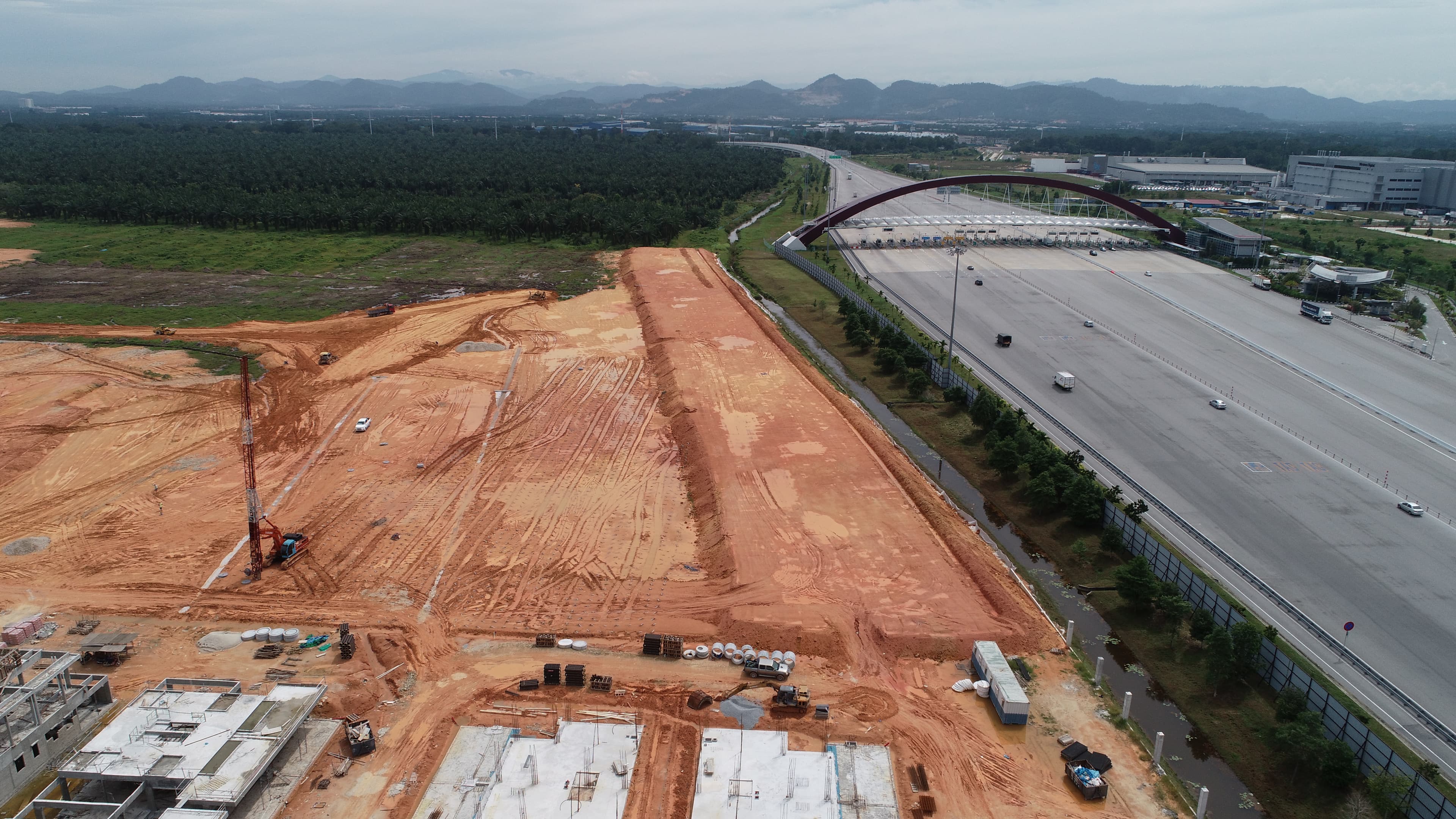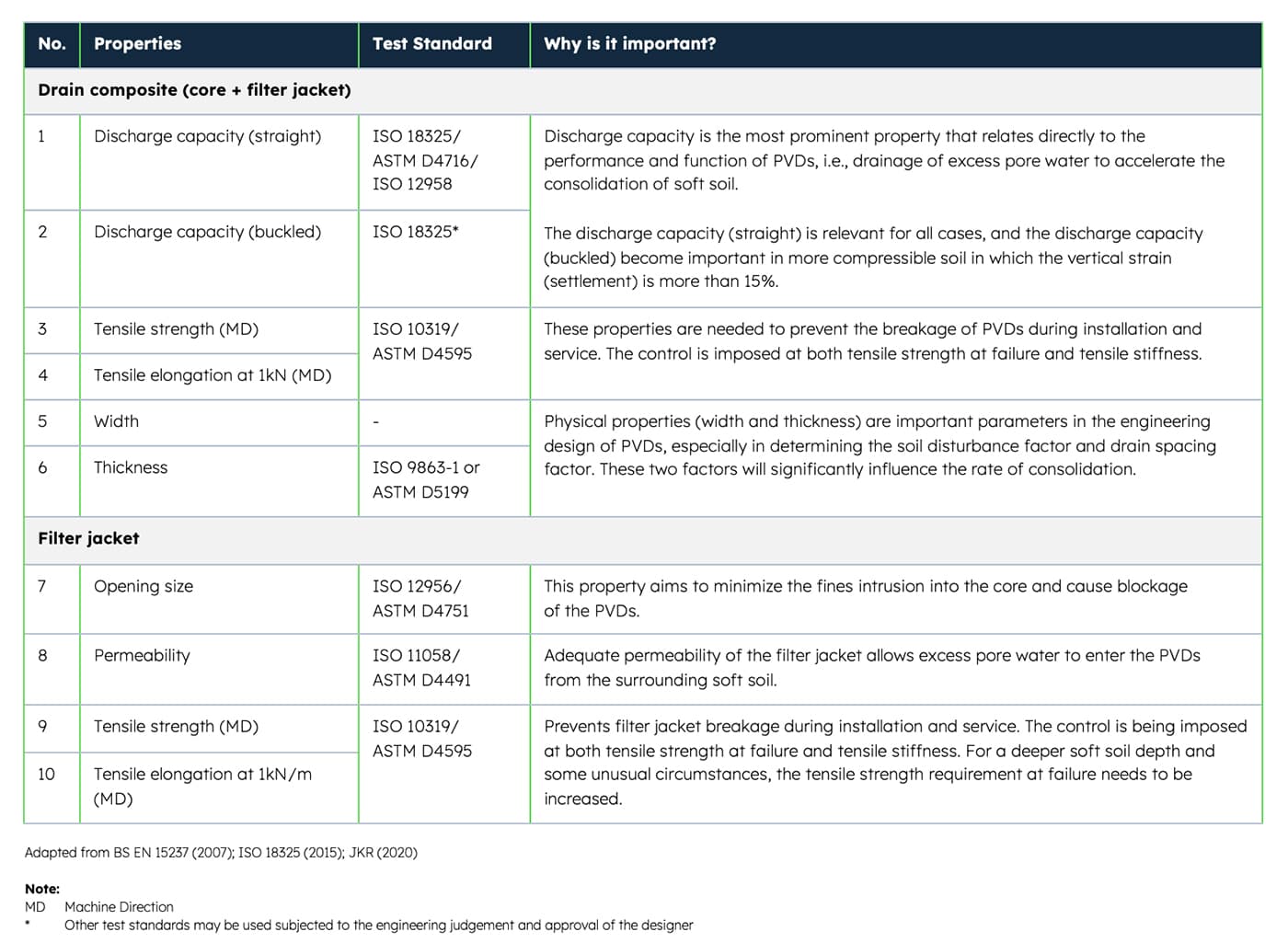
Top 10 critical properties of prefabricated vertical drains
What happens when there is excessive settlement in infrastructure, or when buildings are constructed on soft ground? Excessive settlement can lead to cracks, distortion, and damage to structures, services, and infrastructure, often resulting in high maintenance costs and safety concerns.
One of the most common and effective techniques for soft ground improvement to address this issue involves using Prefabricated Vertical Drains (PVD) combined with surcharging/preloading. This technique is widely adopted in various markets such as infrastructure, building construction, land reclamation, mining, etc. It is particularly used in low permeability, soft, and saturated fine-grained soils, such as clays, silts, and dredge fills, to expedite the consolidation process.
PVDs are defined in ISO 18325, 2015 as drainage composites with a rectangular cross-section, typically 100 mm wide, installed vertically into soil to provide drainage for accelerated soil consolidation. They usually consist of a central core with a channel system surrounded by a filter jacket or with a filter adhered to it. Sometimes PVDs are also referred to as wick drains, band drains, strip drains, etc.
When subjected to a compression load, excess pore water pressure builds up. Depending on the thickness of the soil, it can take years for this excess pore water to dissipate through these low-permeable soils. The main purpose of using PVDs is to reduce the drainage path, so that the time taken for the dissipation of excess pore water or consolidation of soft soil can be reduced.
Advantages of PVDs (according to BS EN 15237, 2007):
Accelerate the consolidation process and reduce construction time.
Reduce post-construction settlement.
Increase stability by increasing effective stresses in the soil.
Lower groundwater level.
PVDs are usually considered sufficiently durable for a minimum service life of 5 years, as stated in BS EN 13252, 2016. It is also common to use recycled materials to produce the core of PVDs, helping to manage excess recycled materials and promote sustainability. Most of the global standard properties/requirements can be achieved, despite the inclusion of recycled materials.
However, the vast number of properties related to PVDs often leads to confusion. We have summarized the top ten most crucial PVD properties required for effective consolidation:
Top 10 critical properties of PVDs
References:
BS EN 13252 (2016). ‘Geotextiles and geotextile- related products- Characteristics required for use in drainage systems,’ CEN: European Committee for Standardization and BSI: British Standards.’
BS EN 15237 (2007). ‘Execution of special geotechnical works- vertical drainage,’ CEN: European Committee for Standardization and BSI: British Standards.
ISO 18325 (2015). ‘Geosynthetics- Test method for the determination of water discharge capacity for prefabricated vertical drains’. Geneva: International Organization for Standardization.
JKR (2020) JKR standard specifications for building works 20800-0226-20- Section V: Ground Improvement. Kuala Lumpur: Public Works Department, Malaysia.
Explore more blogs
View allHow durable are GEOTUBE units in engineering projects?
Do geosynthetic clay liners require prehydration?
What are the key considerations in designing reinforced soil slopes?
A technical overview of reinforced soil slopes (RSS) in geotechnical engineering, focusing on design, erosion control, and innovative materials for slope stability.